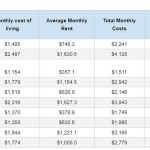By Michael Wilson, chief equity strategist at Morgan Stanley
Over the past two weeks, the markets have been fixated (rightly) on the rapid failure of two major banks that up until very recently had been viewed as “safe” depository institutions. The reason for their demise is crystal clear in hindsight and not that surprising when you see what they were doing with the deposits and the fact that interest rates are up 500bp year over year. The uninsured deposit backstop put in place last weekend by the Fed/FDIC will help to alleviate further major bank runs, but it won’t stop the already tight lending standards across the banking industry from getting even tighter. It also won’t prevent the cost of deposits from rising, thereby pressuring net interest margins. In short, the risk of a credit crunch has increased materially.
Bond markets have exhibited extreme volatility around these developments as market participants realize the ramifications of tighter credit. The yield curve has bull steepened by 60bp in a matter of days, something seen only a few times in history and usually the bond market’s way of saying recession risk is now more elevated. An inversion of the curve typically signals a recession within 12 months, but the real risk starts when it re-steepens from the trough. Meanwhile, the ECB decided to raise rates by 50bp last week despite Europe’s own banking crisis and very sluggish economy. The German Bund curve seemed to disagree with that decision and bull steepened by 50bp.
If growth is likely to slow from the effective tightening rolling through the US banking system, as we expect, and the bond market seems to be supporting that conclusion, why on earth did US stocks rally last week? We think it had to do with the view we have heard from some clients that the Fed/FDIC bailout of depositors is a form of quantitative easing (QE) and provides the catalyst for stocks to go higher [ZH: it may not be technically right now, but give it a few weeks and a few more failed banks].
While the massive increase in Fed balance sheet reserves last week does reliquefy the banking system, it does little in terms of creating new money that can flow into the economy or the markets, at least beyond a brief period of, say, a few days or weeks. Secondarily, the fact that the Fed is lending, not buying, also matters. If a bank borrows from the Fed, it is expanding its own balance sheet, making leverage ratios more binding. When the Fed buys the security, the seller of that security has balance sheet space made available for renewed expansion. That is not the case in this situation.
According to the Fed’s weekly release of its balance sheet on Wednesday, the Fed was lending depository institutions $308B, up $303B week over week. Of this, $153B was primary credit through the discount window, which is often viewed as temporary borrowing and unlikely to translate into new credit creation for the economy. $143B was a loan to the bridge banks the FDIC created for Silicon Valley Bank and Signature. These reserves are obviously going nowhere. Only $12B was lending through its new Bank Term Funding Program (BTFP), which is viewed as more permanent but also unlikely to end up converting into new loans in the near term. In short, none of these reserves will likely transmit to the economy as bank deposits normally do. Instead, we believe the overall velocity of money in the banking system is likely to fall sharply and more than offset any increase in reserves, especially given the temporary/emergency nature of these funds. Moody’s recent downgrade of the entire sector will likely contribute further to this deceleration.
Over the past month, the correlation between stocks and bonds has reversed and is now negative. In other words, stocks go down when rates fall and vice versa. This is in sharp contrast to most of the past year when stocks were more worried about inflation, the Fed’s reaction to it, and rates going higher. Instead, the path of stocks is now about growth, and our conviction that earnings forecasts are 15-20% too high has increased. From an equity market perspective, the events of the past week mean that credit availability is decreasing for a wide swath of the economy, which may be the catalyst that finally convinces market participants the equity risk premium (ERP) is way too low. We have been waiting patiently for this acknowledgment because with it comes the real buying opportunity.
Just to remind readers, the S&P 500 ERP is currently 220bp. Given the risk to the earnings outlook, risk/reward in US equities remains unattractive until the ERP is at least 350-400bp, in our view.
More in the full note available to pro subs.
Loading…












